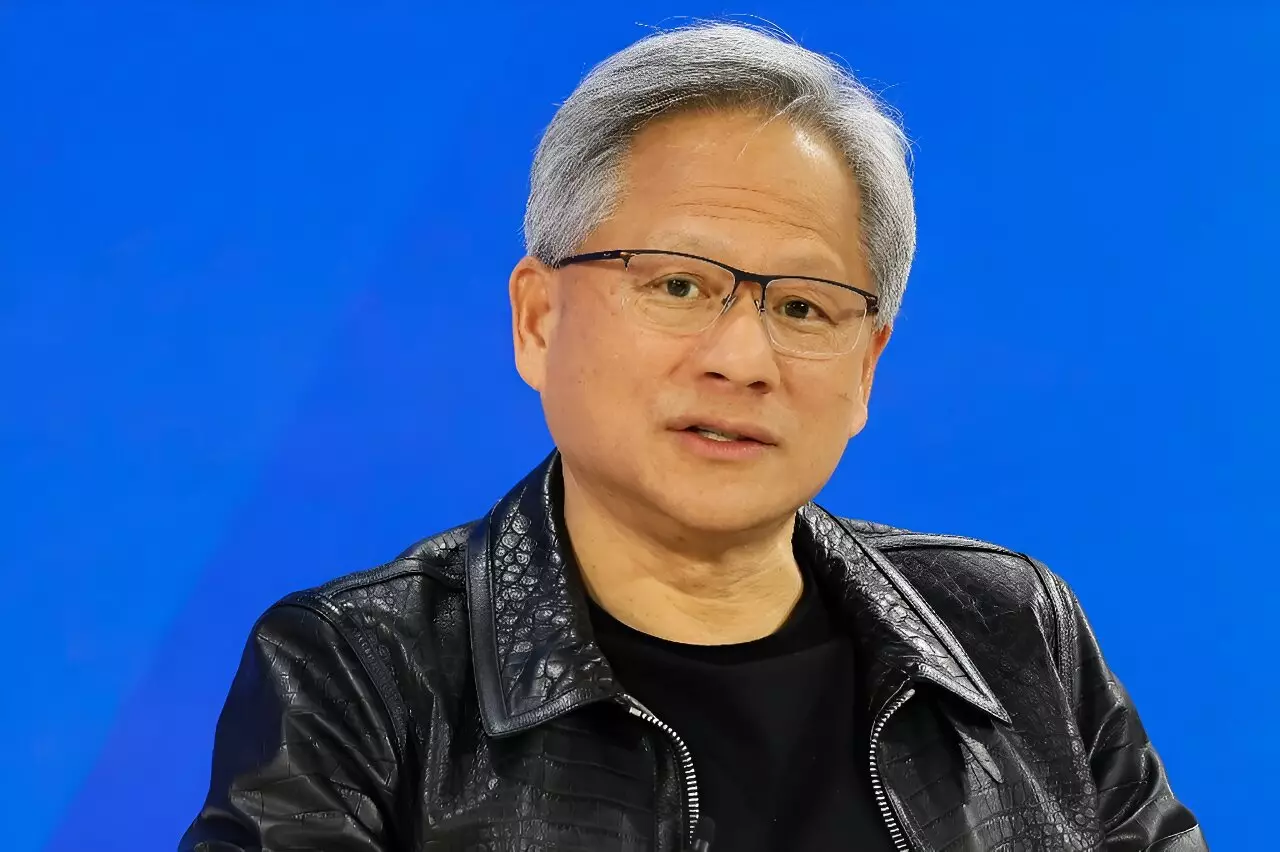

Nvidia recently made headlines by unveiling its latest family of chips designed to power artificial intelligence. This move solidifies Nvidia’s position as a major player in the AI industry, with the company aiming to meet the growing demand for more powerful GPUs to fuel the AI frenzy.
During a developers conference in California, CEO Jensen Huang introduced the audience to Nvidia’s newest, and notably large GPU. This announcement marks a significant milestone for the company, as their GPUs are crucial in the development of generative AI. The event has been likened to an “AI Woodstock” by industry analysts, highlighting the significance of Nvidia’s role in the AI revolution.
Nvidia’s powerful GPU chips and software have set it apart from competitors like AMD and Intel, who are struggling to match the performance and efficiency of Nvidia’s products. This dominance in the market has fueled Nvidia’s exponential growth, with its share price surging by approximately 250 percent over the past year. The company now ranks among the top tech giants based on market capitalization, trailing only behind Microsoft and Apple.
Nvidia didn’t stop at just unveiling a new GPU; they also introduced a more powerful processor and software on the Blackwell platform. Named after David Blackwell, the first Black academic inducted into the National Academy of Science, Blackwell GPUs promise to be four times faster than the previous generation when training AI models. Additionally, they boast 25 times the energy efficiency, addressing concerns about the energy consumption associated with AI development.
Despite Nvidia’s technological advancements, there are challenges on the horizon. The company relies on subcontractors, mainly Taiwan Semiconductor Manufacturing Co., to manufacture its chips, leading to potential vulnerabilities due to geopolitical tensions with Taiwan and China. Moreover, regulatory restrictions have limited Nvidia’s ability to supply its most powerful chips to Chinese companies.
In addition to launching new hardware, Nvidia also announced other AI initiatives, including Project Gr00t, a platform for training humanoid robots. This groundbreaking project aims to create robots capable of understanding human interactions and mimicking human movements. Nvidia’s collaboration with Apple to integrate AI capabilities into spatial computing gear underscores the ongoing competition in the AI space, as tech giants strive to stay ahead in the rapidly evolving landscape.
Nvidia’s latest chip unveiling represents a significant milestone in the AI industry, showcasing the company’s commitment to innovation and technological advancement. As Nvidia continues to push boundaries with its AI developments, the future of artificial intelligence looks promising, with new opportunities for growth and advancement on the horizon.
In the realm of software development, the ability to swiftly and accurately address bugs is…
The realm of quantum computing and communication is not just an abstract dream anymore; it…
In a remarkable leap for the field of material science, a collaborative research initiative has…
Throughout Earth's vast history, our planet has endured five major mass extinction events that reshaped…
Rainfall is a vital element of our planet’s hydrological cycle, yet many aspects of its…
On a night when the universe aligns, a mesmerizing phenomenon awaits: the appearance of the…
This website uses cookies.